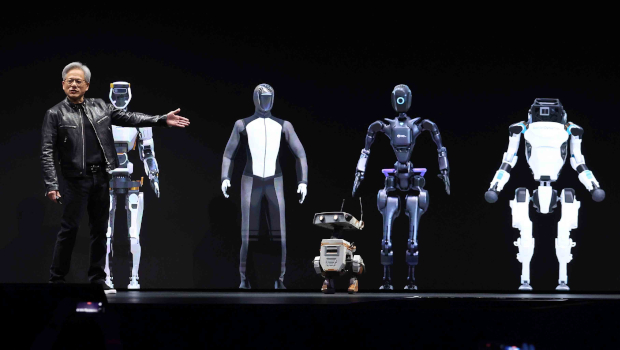
Nvidia promotes development of humanoid robots with cloud computing
Leading robotics companies are working with Nvidia to advance the development of humanoid robots using advanced cloud-to-robot computing platforms. Jensen Huang, founder and CEO of Nvidia, believes physical AI and robotics will drive the next industrial revolution.
Nvidia offers comprehensive tools for every stage of the robotics lifecycle, from AI brains for robots to simulated environments for training. The Isaac GR00T-Dreams blueprint, unveiled at Computex, addresses the lack of data by allowing developers to generate massive amounts of synthetic motion data with a single image as input. With this data, in the form of compressed action points, robots can learn new behaviors and adapt to changing environments.
The GR00T-Dreams blueprint complements the existing GR00T-Mimic blueprint, which uses Nvidia Omniverse and Cosmos platforms to extend existing data. By generating entirely new data, GR00T-Dreams significantly speeds up the robot training process.
Nvidia used GR00T-Dreams to develop the updated GR00T N1.5 model in just 36 hours, a task that previously would have taken nearly three months. This improved model exhibits improved adaptability to new environments and object recognition via user instructions, leading to higher success rates for common production tasks.
Early users of GR00T N models are already seeing benefits in various industries. For example, AeiRobot is using the models to help ALICE4 robots understand natural language instructions and perform complex pick-and-place operations in industrial environments. Foxlink Group uses them to improve the flexibility and efficiency of robotic manipulators, while Lightwheel uses them to validate synthetic data, allowing humanoid robots to be deployed faster. NEURA Robotics is evaluating the models for developing domestic automation systems.
To meet the challenges of data collection and physical testing, Nvidia introduced new simulation technologies: Cosmos Reason, a world foundation model (WFM) that generates accurate synthetic data; Cosmos Predict 2, with performance enhancements for generating high-quality worlds; GR00T-Mimic blueprint for generating massive amounts of synthetic motion trajectories; an open-source physical AI dataset; and Nvidia Isaac Sim 5.0 and Isaac Lab 2.2 for simulation and robot learning.
Leading robotics companies such as Agility Robotics, Boston Dynamics, Fourier, Mentee Robotics, NEURA Robotics, Skild AI and XPENG Robotics use these simulation frameworks to develop and train their humanoid robots.
Finally, Nvidia offers universal Blackwell systems powered by RTX PRO workstations and servers, providing a single architecture for all workloads for robot development. Developers can access even more computing power through GB200 NVL72 Blackwell systems on leading cloud providers, enabling data to be processed up to 18x faster. The upcoming Nvidia Jetson Thor platform will further accelerate on-robot inference and runtime performance, paving the way for the widespread adoption of humanoid robots.
Business AM






Subscribers 0
Fans 0
Followers 0
Followers